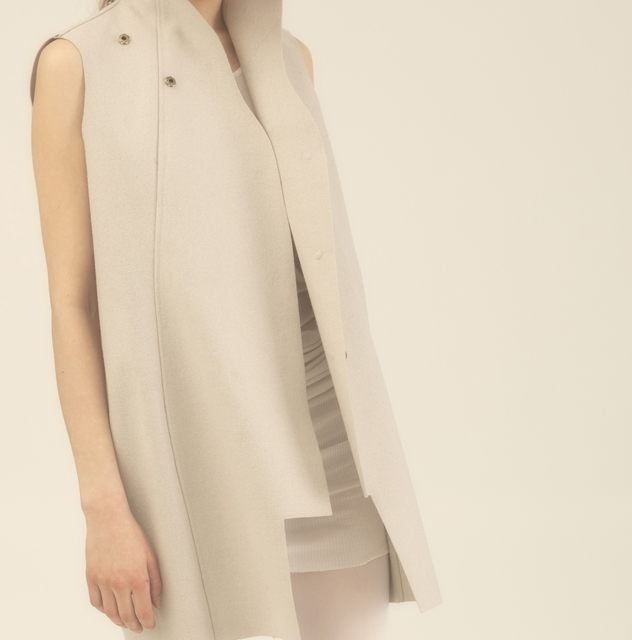Having spent most of my life in major cities, I do a lot of walking. It is my preferred mode of transportation. I’m a pedestrian.
Recently in Paris, the weather has been lovely, unseasonably so. And it makes me think about how hard it can be to dress for these transitional days that can linger on before the official shift in season.
It is a red flag to pass the threshold from indoors to out and feel comfortable as you are. What it means, I’ve learned, is that in about 100 yards you will be uncomfortably warm, begin perspiration, and regret every decision you made while getting dressed and reimagining what you should have put on instead. And probably saying next time I’ll know better.
But it’s actually a science to understand how to really dress for the weather.
Since I don’t have a laboratory or my own research and development team toiling away after a solution (yet), there are low-tech solutions that I consider, always through trial and error. These are some of the things I've learned, and that always inform my designs:
Think about fabric content. Having one wind-blocking layer and the rest as breathable as possible, my favorite wind blockers being leather and felt. I also prefer sleeveless for the wind-breaking layer. It’s tempting to put on the wool jacket, but you’ll just work up a sweat only to open the front to let some heat out, which leaves the most vulnerable part of you exposed. If you think about it, we should actually wear our coats backwards to let the heat out the back and keep our chests protected. But the sleeveless option is probably more practical: let the heat from our core disperse to our extremities to keep us balanced.
Think about where you are layering . I find that mixing long sleeves and sleeveless are the best combination. Anything short sleeved is uncomfortable and counterproductive. You’re adding bulk in a place where it’s the most hindering to movement, and not adding any valuable protection.
By alternating sleeveless, long-sleeved, sleeveless, you might feel a slight chill on your arms before you start moving, but you’ll be thankful once your body heats up and it has a place let go of the excess, while your core stays warm.
Think about your core. Before I’ll pull out my winter coat, I’ll pull out a crux. The piece that keeps the neck and core extra cozy, bridging the wardrobe that you skip back and forth between while the weather is decided whether to commit to winter or not. Because once you put on that winter coat, you’re committed to it. (Like the rain boots or a raincoat you wore because it deceptively rained in the morning only to clear up as you arrive at work)
But this is now. There are possible hi-tech solutions that could do incredible things to solve this and other sartorial problems.
Starting with fabric content: Imagine garments of natural fibers that have the same technical qualities of the synthetic fibers we wear at the gym and in extreme environments. Just because it’s cold in the city doesn’t mean you have to dress like you’re in the mountains. Think of a cashmere coat that is both waterproof and breathable. A long-sleeved knit of natural fibers that wicks sweat. A super lightweight wool that keeps you cool when it’s warm (this last one already exists, called Cool Wool, and is used in the Spring collection).
In layering: Imagine a system that has just the right density over precise parts of the body to maximize on the bodies internal regulatory system. Imagine a personalized body map that generates your customized layers with notes on how to combine them for a range of different temperature conditions. And these won’t be star trek uniforms; they’ll be the timeless, refined garments of a confident and mature consumer.
And finally, an accessory that takes its shape from a combination of aesthetics, ergonomics, and biology to show the potential for fashion to take new form in the future. We call it the crux.
These are the kinds of considerations that Fashion Designers will need to reflect on and act on in the years to come. This approach is on the fringes of the fashion industry as it currently operates. But it has a voice that’s coming up through the concept of sustainability and research and development in textile mills globally. Eliminate waste, and maximize effectiveness.
Always, fashion comes first; as without aesthetic credibility, the ideas can’t catch on. There are still many ways that technology isn’t ready to be applied in a commercially viable way, and many designers who don’t consider these issues a part of their job. Until these two can meet, the exploration of low and hi tech solutions for the here and now will help us to continue to ask the right questions and develop the answers over time.
And so, I’ll keep up my pedestrian experiments and offer solutions via Starkweather that will carry women through the seasons into the future.

